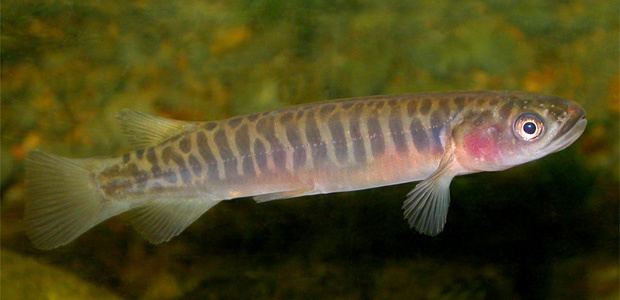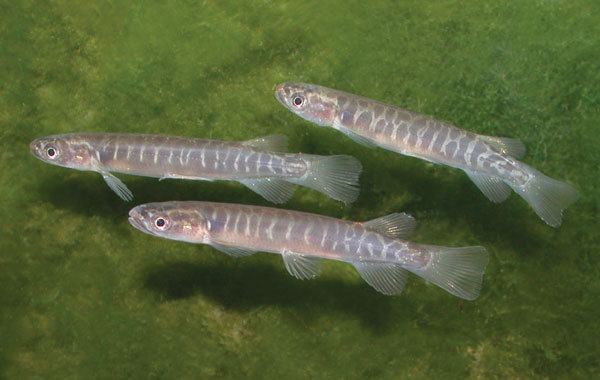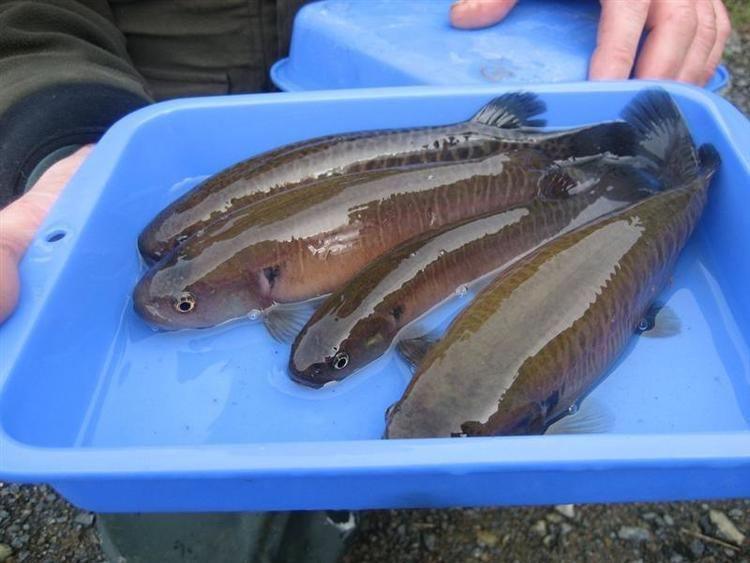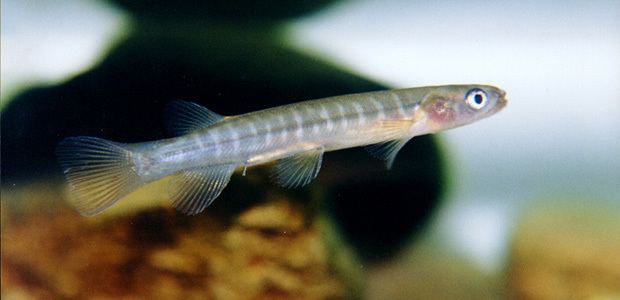Kingdom Animalia Subfamily Galaxiinae Scientific name Galaxias fasciatus Higher classification Galaxias Order Osmeriformes | Family Galaxiidae Genus Galaxias Phylum Chordata Rank Species | |
 | ||
Similar Giant kokopu, Shortjaw kokopu, Climbing galaxias, Galaxias, Galaxiidae | ||
Banded kokopu new zealand native fish
The banded kokopu (Galaxias fasciatus) is a galaxiid of the genus Galaxias, found only in New Zealand, including the Chatham and Stewart/Rakiura islands. It commonly grows to 20–25 cm, but has been recorded growing to around 30 cm. Juvenile banded kokopu are good climbers and can climb up waterfalls and other vertical surfaces by moving into the splash zone and wriggling up the surface, using the water surface tension and their large downturned fins for grip.
Contents
- Banded kokopu new zealand native fish
- Banded kokopu in the kahika stream auckland new zealand
- Description
- Life cycle
- Behaviour
- References

Banded kokopu in the kahika stream auckland new zealand
Description

Banded kokopu are a stout-bodied fish, with a large head and mouth. The fish are strong, rounded and fleshy. Like other galaxiids, the dorsal and anal fins are positioned close to the tail fin, which is short and square. The caudal peduncle is short and deep, with thick fleshy flanges which join the tail fin.

Adults are usually a dark, earthy brown or olive brown, with pale yellow vertical bands along the body. The belly is light coloured and unpatterned. Behind the operculum and above the pectoral fin is a silver or white mark, and sometimes a darker mark behind this. The bands either fade out top and bottom, or fork and crisscross the back of the fish. In small fish the bands are usually numerous and along the whole body, but in adults the bands become narrower and are often restricted to the rear third of the body. Although the bands change as the fish ages, the placement and shape of the bands are consistent enough to be used for individual identification over several years.

Medium and juvenile giant kokopu can sometimes be mistaken for banded kokopu, as they can also develop vertical stripes. The easiest way to differentiate between the two species is that banded kokopu have a white or silver mark immediately behind the operculum, above the pectoral fin, and giant kokopu do not. Also, the markings of banded kokopu either fork and spread across the back of the fish, or fade out top and bottom, while the markings on giant kokopu never fork, and have a crisp edge all the way around. Juvenile shortjaw kokopu may also be mistaken for a very pale and poorly marked banded kokopu, but the small mouth of the shortjaw is diagnostic.
Life cycle

Banded kokopu are diadromous, spending the first 3–4 months of live at sea, before migrating back to freshwater as whitebait (40-45mm long).

Banded kokopu become sexually mature at two or three years old. They spawn in adult habitats during flood events in autumn and early winter, laying the 2 mm diameter eggs amongst flooded vegetation and leaf litter on the edge of the stream. As the flood recedes the eggs are left to develop out of the water; the high humidity provided by the vegetation keeps them moist. After three to four weeks the embryos are fully developed and require a second flood to stimulate them to hatch, and the larvae are carried to sea on the floodwaters. They live amongst and on the plankton for 3–4 months before returning to freshwater.
Banded kokopu can live for at least nine years, possibly longer, and spawn multiple times over their lifetime.
Behaviour
Banded kokopu are largely nocturnal, and may be easily and unobtrusively observed night, ideally using red light. Banded kokopu may also be observed during the day if undisturbed.
Juvenile banded kokopu are one of five species of galaxiid caught and eaten as whitebait.
